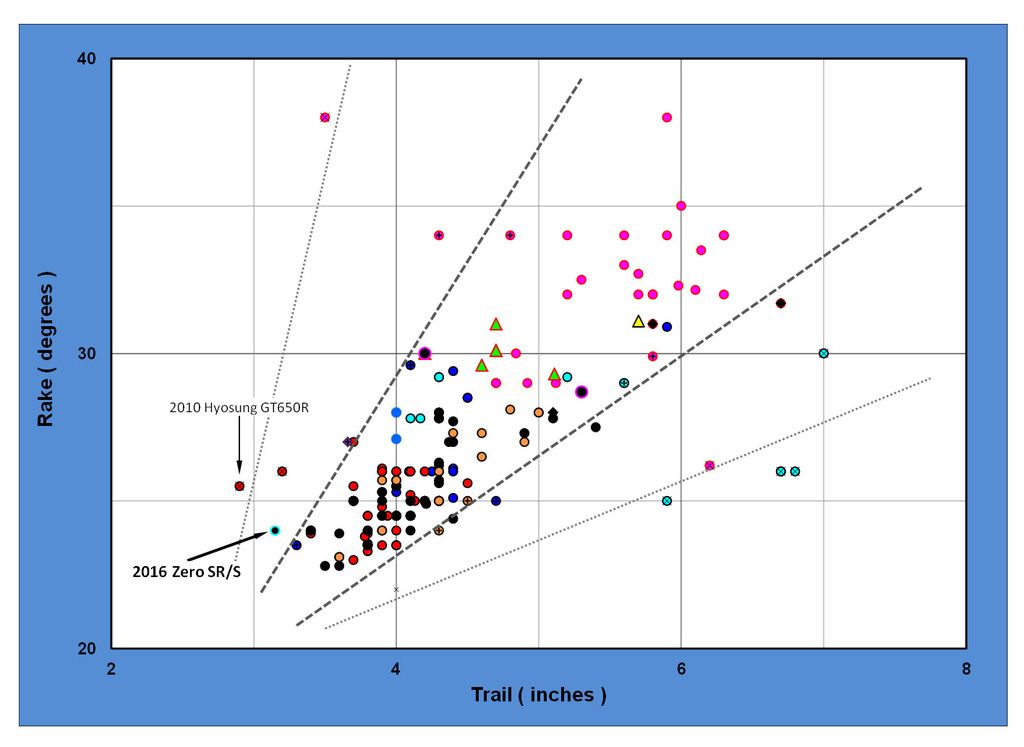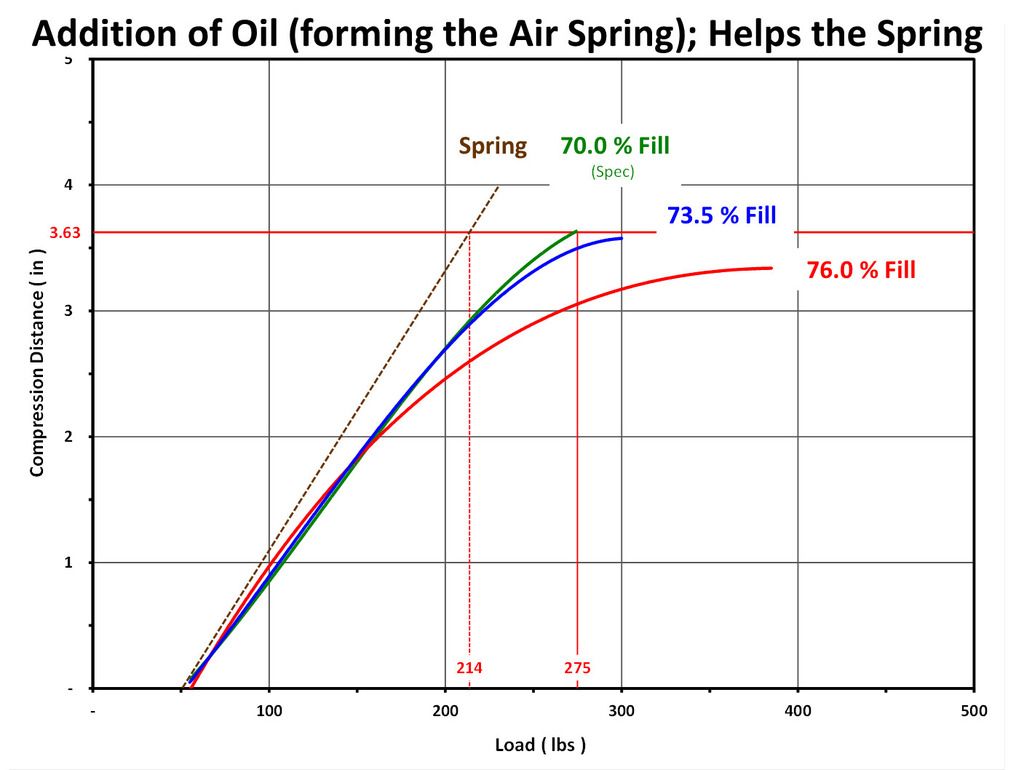1
Zero Motorcycles Forum | 2013+ / Re: 2015 SR Front Suspension WAY Too Stiff
« on: January 30, 2016, 06:39:36 AM »
To verify your spring rate, add a ziptie to the the fork tube. Make sure it is snug so it stays in the place it was last pushed too. Once the zip tie is on the fork tube, you push it up to rest it against the upper fork.
Bike sag: lift the front fork off the ground and measure the gap (ziptie to fork gap) created by the front weight of the bike.
Rider sag: Now push ziptie back up the fork, then sit on the bike and raise your feet so all of your weight is carried through the suspension. Then carefully dismount and put kickstand down. Measure the gap (ziptie to fork) created by your weight. Add this gap measurement to the bike sag measurement, this is the total sag. This measurement should be around 25% of the working range of the front suspension. Now that is a rule of thumb, it can be higher or lower than 25%. It depends on what is happening when you are loading up the suspension (upper rend).
Checking the upper end by using the zip tie. After riding, check the location of the ziptie, the gap from the fork to the ziptie. Lets say the measurement is 5". Then you would know the total max travel used was 5" + bike sag measurement. That total measurement should never equal the total suspension travel amount (6", I think based on your posting). If it equal, then you are bottoming out. You would need to increase the preload and see if this keeps you from bottoming out. If you use max preload and are till bottoming out, You will need stronger springs. If you find you are only using 75% to 80% of the max suspension travel, you can reduce the preload spacer length some or you can live with this. If you are only using ~50% or less of the suspension travel, your springs are probably too stiff. You should swap springs to a lower rate spring.
Hopefully, some helpful guides.
Jerry
Bike sag: lift the front fork off the ground and measure the gap (ziptie to fork gap) created by the front weight of the bike.
Rider sag: Now push ziptie back up the fork, then sit on the bike and raise your feet so all of your weight is carried through the suspension. Then carefully dismount and put kickstand down. Measure the gap (ziptie to fork) created by your weight. Add this gap measurement to the bike sag measurement, this is the total sag. This measurement should be around 25% of the working range of the front suspension. Now that is a rule of thumb, it can be higher or lower than 25%. It depends on what is happening when you are loading up the suspension (upper rend).
Checking the upper end by using the zip tie. After riding, check the location of the ziptie, the gap from the fork to the ziptie. Lets say the measurement is 5". Then you would know the total max travel used was 5" + bike sag measurement. That total measurement should never equal the total suspension travel amount (6", I think based on your posting). If it equal, then you are bottoming out. You would need to increase the preload and see if this keeps you from bottoming out. If you use max preload and are till bottoming out, You will need stronger springs. If you find you are only using 75% to 80% of the max suspension travel, you can reduce the preload spacer length some or you can live with this. If you are only using ~50% or less of the suspension travel, your springs are probably too stiff. You should swap springs to a lower rate spring.
Hopefully, some helpful guides.
Jerry









